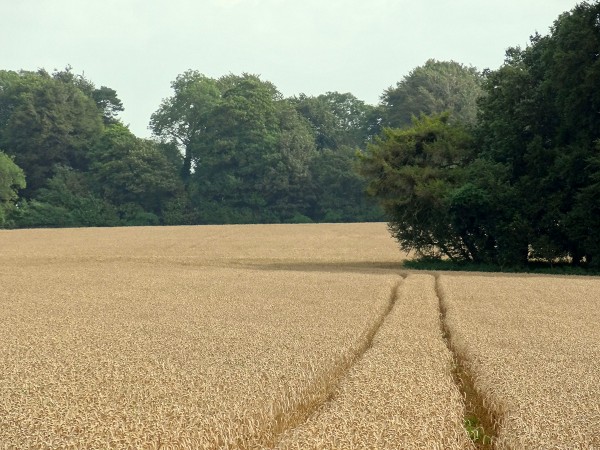 The market for any good or service is affected by countless factors. On the demand-side, things such as incomes, relative prices, expectations of price changes and tastes determine the shape and position of the demand curve. For the supply curve, it’s factors including costs of production, the profitability of alternative goods and in some cases, the weather or natural disasters. It is this last factor, which has presented Weetabix with problems.
The market for any good or service is affected by countless factors. On the demand-side, things such as incomes, relative prices, expectations of price changes and tastes determine the shape and position of the demand curve. For the supply curve, it’s factors including costs of production, the profitability of alternative goods and in some cases, the weather or natural disasters. It is this last factor, which has presented Weetabix with problems.
An established breakfast cereal and brand, Weetabix is well-known for producing a range of high quality products. However, production of some of its most popular products has been stopped, as the quality of the British wheat used to make the various cereals was called into question. Last year, we had little summer to speak of and this led to the ‘worst harvest we have seen in decades’, so much so that the quality of the wheat was not sufficient to be used in making the breakfast cereal. This has caused production to cease on certain products and shortages have already begun to emerge, with some shops completely selling out and facing no prospect of being re-stocked.
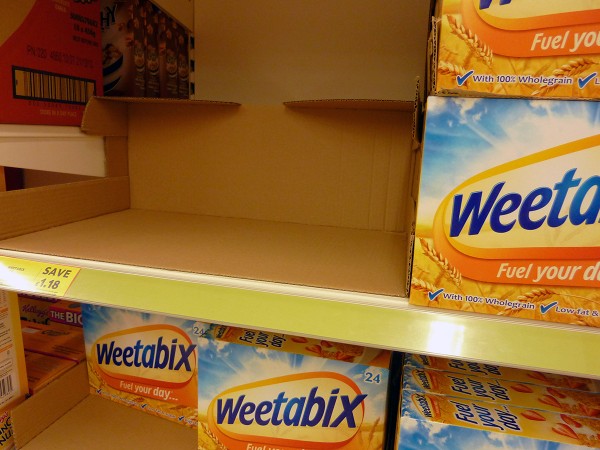 Weetabix is now owned by a Chinese state-owned company, but still prides itself on using locally sourced wheat. However, with the weather affecting the harvest, wheat from abroad has had to be used, aiming to reduce the gap between demand and supply. The UK is typically an exporter of wheat, but with the poor harvest has come a drop in the amount of wheat produced and thus exported by some 2m tonnes – this is back to a similar level as was seen in the 1980s. A spokesman for Weetabix said:
Weetabix is now owned by a Chinese state-owned company, but still prides itself on using locally sourced wheat. However, with the weather affecting the harvest, wheat from abroad has had to be used, aiming to reduce the gap between demand and supply. The UK is typically an exporter of wheat, but with the poor harvest has come a drop in the amount of wheat produced and thus exported by some 2m tonnes – this is back to a similar level as was seen in the 1980s. A spokesman for Weetabix said:
Normally they’re proud to claim Weetabix is not just British wheat but from within 50 miles of Burton Latimer … They have had to source a bit from outside the UK, but Weetabix is still proud to say it sources its wheat within the UK … weather permitting.
Supply will be increased once wheat from abroad is used, but it is expected that this will take a couple of weeks. In the meantime, if you’re a consumer of the traditional Weetabix, you don’t need to worry, as it’s the less-known cereals that have been affected. The following articles consider this external factor and how it affects the supply of a product.
Weetabix products hit by poor wheat harvest BBC News (22/4/13)
Weetabix supplies hit by dismal harvest The Guardian, Rupert Neate (22/4/13)
Weetabix move to scale back production and re-engineer process is a commendable one The Grocer (20/4/13)
Britain’s disastrous wheat harvest halts production of Weatbix Minis and Oatibix Mail Online, Leon Watson (22/4/13)
Bad weather threatens wheat harvest Channel 4 News, Tom Clarke (3/4/13)
Weetabix halts production of Minis after poor harvest Farmers Weekly, Philip Case (22/4/13)
Questions
- With a poor harvest, which way would you expect the supply curve to shift? Illustrate this on a diagram.
- How should this shift in supply affect the market price and quantity of wheat, assuming all else remains the same?
- How can this example can be used to explain the interdependence between markets?
- With shortages possibly emerging, what might happen to demand today? Illustrate your answer on a demand and supply diagram.
- Does sourcing wheat from local areas give Weetabix a competitive advantage? If so, how might it be affected if it does choose to import wheat?
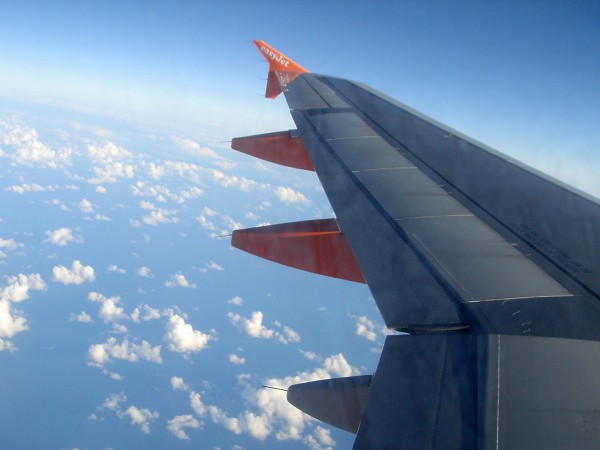 Investment is crucial in all sectors of the economy. With growing demand for travel abroad, airports across the world have begun implementing investment strategies to increase capacity. Airport bosses at Heathrow are currently considering a 5 year investment plan that is expected to cost £3 billion.
Investment is crucial in all sectors of the economy. With growing demand for travel abroad, airports across the world have begun implementing investment strategies to increase capacity. Airport bosses at Heathrow are currently considering a 5 year investment plan that is expected to cost £3 billion.
Although investment is certainly needed and passengers will benefit in the long run, the cost of this investment will have to be met by someone. If these plans are approved by the airport bosses, it is likely that ticket prices will be pushed upwards to pay for it. Any increase in charges will have to receive approval by the Civil Aviation Authority (CAA). The plan at the moment would see ticket prices, via landing charges, increase by £19.33 per passenger before a further rise to £27.30. The impact on customers has already been raised as a key concern.
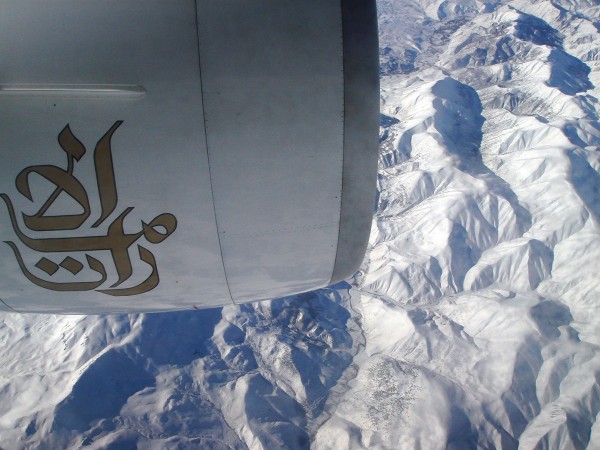 If the investment plans proceed, Heathrow expects to see its passenger numbers increase by 2.6m over the next 5 years, despite the proposed price hikes. This would naturally increase revenue and this money would provide at least some of the funds to repay the cost of the investment.
If the investment plans proceed, Heathrow expects to see its passenger numbers increase by 2.6m over the next 5 years, despite the proposed price hikes. This would naturally increase revenue and this money would provide at least some of the funds to repay the cost of the investment.
The price rises have been described as ‘incredibly steep’ and there are concerns that they will penalize customers. Airlines, such as Virgin Atlantic have recognized the need for more investment, but are more focused on finding ways to provide it without the price rises.
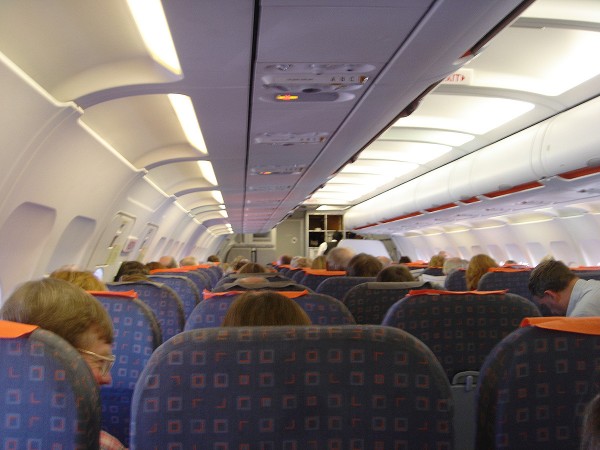 However, Colin Matthews, the Heathrow Chief said:
However, Colin Matthews, the Heathrow Chief said:
Heathrow faces stiff competition from other European hubs and we must continue to improve the service we offer passengers and airlines.
Passengers have already seen prices rise and Heathrow’s cost base has been described by British Airways as ‘inefficient’. Despite the fact that the decision by the CAA is not expected until January 2014, speculation will undoubtedly continue until any decision is reach. The following articles consider this case.
Heathrow hits turbulence over airport charges The Telegraph, Nathalie Thomas (12/2/13)
Heathrow Airport proposes ‘to raise ticket prices’ BBC News (12/2/13)
Heathrow investment to raise ticket prices Sky News (12/2/13)
Cost of Heathrow flights to rise by £27 in five years thanks to investment surcharge plans Mail Online, Helen Lawson (12/2/13)
Airlines fly into a rage as Heathrow warns charges must climb steeply Independent, Simon Calder (12/2/13)
Heathrow investment plan may lead to ticket price rise Reuters (12/2/13)
Heathrow calls for rise in airline tariffs Financial Times, Andrew Parker (12/2/13)
Questions
- If you had to undertake a cost-benefit analysis concerning the above investment proposal, which factors would you consider as the private and external benefits?
- Which factors would have to be taken into account as the private and external costs for any cost-benefit analysis?
- How important is it for the CAA to consider external costs and benefits when making its decision?
- If prices rise as the plans propose, what would you expect to be the effect on passenger numbers? How would this change be shown on a demand and supply diagram?
- According to Heathrow, they are expecting passenger numbers to increase, despite the price rises. What does this suggest about the demand curve? Illustrate your answer.
- Would you expect such an investment to have any macroeconomic impact?
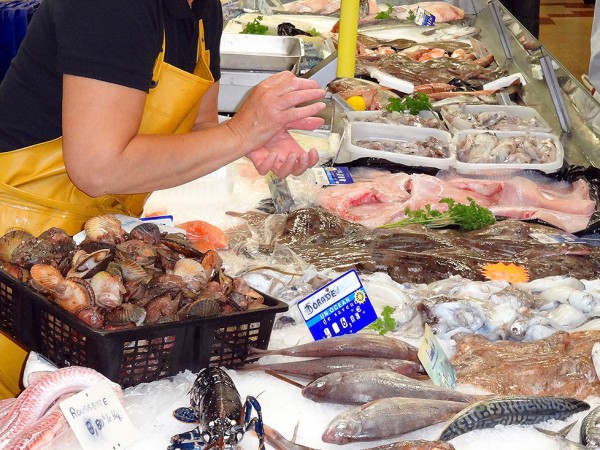 It’s a relatively common dish to see on a menu at a restaurant: mackerel. This particular fish has been promoted as a healthy and sustainable dish, but now its sustainability is coming into question and the Marine Conservation Society has taken it off its ‘fish to eat’ list. My brother Hugh is a marine biologist and often comments on which fish we should be avoiding due to sustainability issues (especially given how much I like fish!) So, how is this an economics issue?
It’s a relatively common dish to see on a menu at a restaurant: mackerel. This particular fish has been promoted as a healthy and sustainable dish, but now its sustainability is coming into question and the Marine Conservation Society has taken it off its ‘fish to eat’ list. My brother Hugh is a marine biologist and often comments on which fish we should be avoiding due to sustainability issues (especially given how much I like fish!) So, how is this an economics issue?
There a couple of key things to pick out here. Firstly, with the conservationists’ warning of this issue of unsustainability, they have been asking consumers to reduce the amount of mackerel they buy. This will naturally have an impact on fisherman. If consumers do listen to the conservationists and hence reduce their demand for mackerel, we could see a fall in the price of this fish and a reduction in the fishermen’s turnover. It could be that we see a switch in consumption to other more sustainable fish, especially if we see some form of intervention.
 Another area concerning economics is the idea of over-fishing. For years, there have been disputes over who has the rights to these fish stocks. In the past, the Faroe Isles and Iceland have increased their quotas significantly, as mackerel appear to have migrated to their shores, contributing to this question of sustainability. Iceland and the Faroe Isles have ‘unilaterally agreed their quotas … as they are not governed by the common fisheries policy’.
Another area concerning economics is the idea of over-fishing. For years, there have been disputes over who has the rights to these fish stocks. In the past, the Faroe Isles and Iceland have increased their quotas significantly, as mackerel appear to have migrated to their shores, contributing to this question of sustainability. Iceland and the Faroe Isles have ‘unilaterally agreed their quotas … as they are not governed by the common fisheries policy’.
The question is: when fisherman catch one additional mackerel, what are they considering? Do they think about the private benefit to them (or their company) or do they consider the external cost imposed on others? Whenever one fish is taken from the sea, there is one less fish available for other fishermen.
 This leads to over-consumption of fish and contributes towards the well-documented depletion of fish stocks and ‘The Tragedy of the Commons’, if account is not taken of the external cost imposed on other fishermen.
This leads to over-consumption of fish and contributes towards the well-documented depletion of fish stocks and ‘The Tragedy of the Commons’, if account is not taken of the external cost imposed on other fishermen.
The total catch is now far in excess of what has been scientifically recommended and previously agreed upon by all participating countries. Negotiations to introduce new catch allowances have so far failed to reach agreement.
There are hopes that an international policy on quotas can be agreed to ensure mackerel levels return to or remain at a sustainable level. However, at present no progress has been made. Until some form of an agreement is reached, fishermen around Iceland and the Faroe Isles will continue to battle against the conservationists. The following articles consider this fishy topic.
Mackerel taken off conservationists’ ‘fish-to-eat’ list The Guardian, Rebecca Smithers (22/1/13)
Warning over mackerel stocks Scottish Herald (22/1/13)
Fishing quota talks begin amid ongoing disputes and finger-pointing The Scotsman, Fran Urquhart (14/1/13)
Mackerel no longer an ethical choice because of over-fishing The Telegraph, Louise Gray (22/1/13)
Ths fishy tale of macro-mismanagement The Guardian, Annalisa Barbieri (22/1/13)
You can still eat mackerel – just make sure it’s British The Telegraph, Louise Gray (22/1/13)
Dispute means mackerel is no longer fish of the day BBC News, Matt McGrath (22/1/13)
Mackerel struck off sustainable fish list Associated Press (22/1/13)
Questions
- Why are quotas set by the EU for fishing? Who do they apply to?
- Why is there an externality from fishing?
- What is the Tragedy of the Commons? Using a diagram with average and marginal revenue product and average and marginal cost illustrate the market equilibrium and the social optimum. Why are they different?
- Following on from question 3, what does this suggest about the role of governments?
- If the conservationists’ request regarding buying less mackerel is successful, what impact might this have on fishermen and fisheries?
- If consumers do switch to buying other fish, what would happen to the equilibrium in the mackerel market and in the market for other fish? Think about this question in terms of general equilibrium analysis.
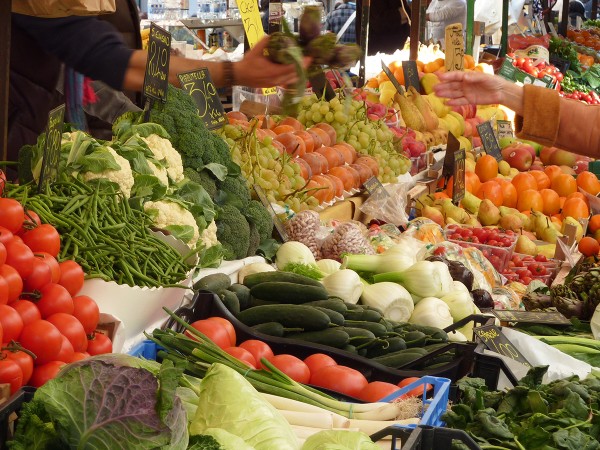 Market trading has existed for centuries and in many respects it hasn’t changed very much. One thing that has developed is the means of exchange. Goods used to be traded for other goods – for example 1 pig for 4 chickens! But then money was developed as a means of exchange and then came cheques and plastic.
Market trading has existed for centuries and in many respects it hasn’t changed very much. One thing that has developed is the means of exchange. Goods used to be traded for other goods – for example 1 pig for 4 chickens! But then money was developed as a means of exchange and then came cheques and plastic.
However, for many market traders, accepting credit and debit cards is relatively costly. It involves paying a monthly contract, which for many traders is simply not worthwhile, based on the quantity and value of the transactions. But, for many customers using debit or credit cards is the preferred method of payment and the fact that some traders only accept cash can be a deterrent to them making purchases and this therefore reduces the sales of the market traders.
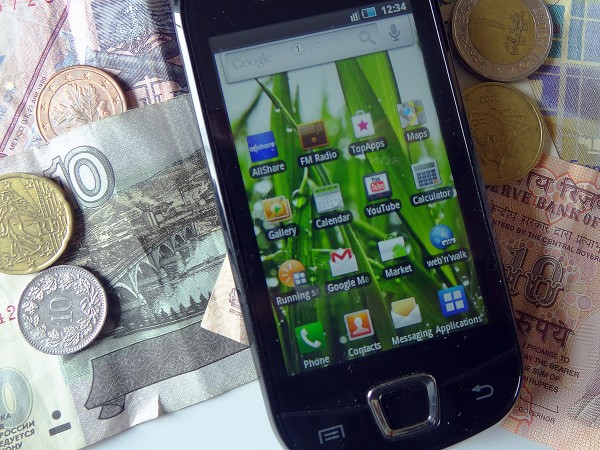 But, with advances in technology a new way of paying has emerged. Small card readers can now be plugged into iphones, ipads, other tablets and smartphones. By putting a customer’s card into this device customers can then pay by card and either sign for their purchase or use the phone to enter their security details. There are plan for these companies to offer chip and pin technology to further ease payment by card on market stalls. The traders pay a small commission per transaction, but aside from that, the initial start-up cost is minimal and it is likely to encourage more customers to use markets. Jim Stewart, the Director of a firm that has begun using this technology said:
But, with advances in technology a new way of paying has emerged. Small card readers can now be plugged into iphones, ipads, other tablets and smartphones. By putting a customer’s card into this device customers can then pay by card and either sign for their purchase or use the phone to enter their security details. There are plan for these companies to offer chip and pin technology to further ease payment by card on market stalls. The traders pay a small commission per transaction, but aside from that, the initial start-up cost is minimal and it is likely to encourage more customers to use markets. Jim Stewart, the Director of a firm that has begun using this technology said:
I think it’s definitely going to take off, the world is going that way … The money has always appeared in my bank account, no transactions have been declined, my accountant is happy, it’s all been good.
Some customers have raised concerns about the security of these transactions, as they have to put their cards into someone else’s ipad. However, traders have said that there are no risks and that customers can be sent a receipt for their purchase. The following few articles look at this latest (and other) technological developments.
Smartphone card payment system seeks small firms BBC News, Rob Howard (19/1/13)
POS Trends: What’s new for 2013 Resource News (17/1/13)
Payments by text message service to launch in UK in Spring 2014 BBC News (15/1/13)
Questions
- What are fixed cost and why does having a traditional card payment machine represent a fixed cost for a firm?
- How might this new technology affect a firm’s sales and profits?
- Will there be an increase in the firm’s variable costs from adopting this technology?
- Using a cost and revenue diagram, put your answers to questions 1 – 3 into practice and show how it will shift them and thus how the equilibrium may change for a market trader.
- What are the properties of money that allow it to be a good medium of exchange?
- How will this increased use of debit and credit cards affect the demand for money? Use a diagram to illustrate your answer.
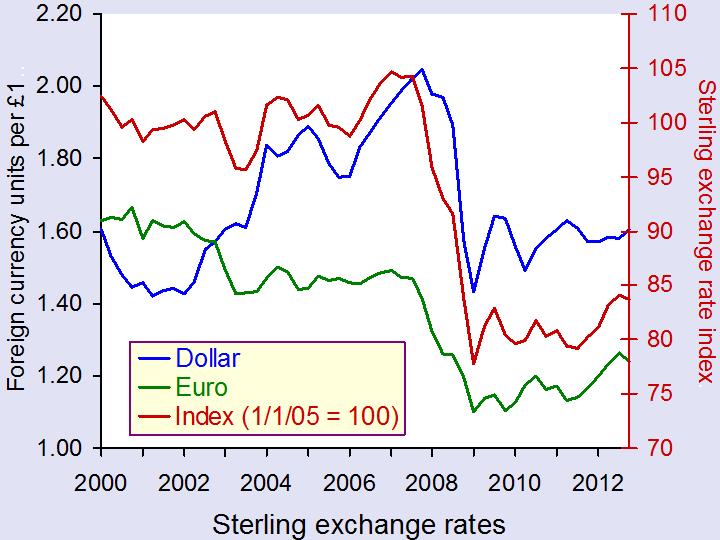 The exchange rate for sterling is determined in much the same way as the price of goods – by the interaction of demand and supply.
The exchange rate for sterling is determined in much the same way as the price of goods – by the interaction of demand and supply.
When factors change that cause residents abroad to want to hold more or fewer pounds, the demand curve for sterling will shift. If, instead, factors change that cause UK residents to want to buy more or less foreign currency, then the supply curve of sterling will shift. It is these two curves that determine the equilibrium exchange rate of sterling.
There are concerns at the moment that sterling is about to reach a peak, with expectations that the pound will weaken throughout 2013. But is a weakening exchange rate good or bad for the UK?
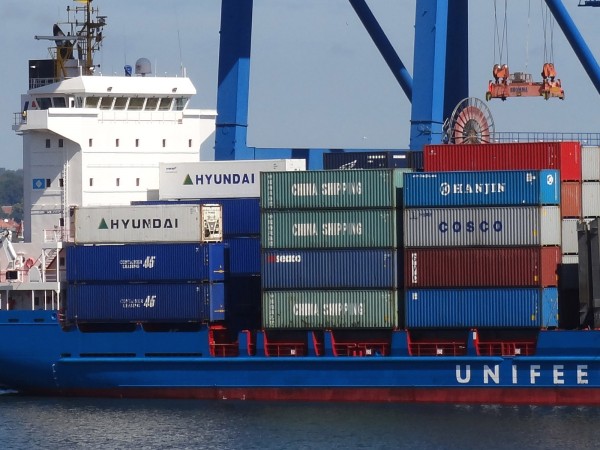 With lower exchange rates, exports become relatively more competitive. This should lead to an increase in the demand for UK products from abroad. As exports are a component of aggregate demand, any increase in exports will lead to the AD curve shifting to the right and thus help to stimulate a growth in national output. Indeed, throughout the financial crisis, the value of the pound did fall (see chart above: click here for a PowerPoint) and this led to the total value of UK exports increasing significantly. However, the volume of UK exports actually fell. This suggests that whilst UK exporters gained in terms of profitability, they have not seen much of an increase in their overall sales and hence their market share.
With lower exchange rates, exports become relatively more competitive. This should lead to an increase in the demand for UK products from abroad. As exports are a component of aggregate demand, any increase in exports will lead to the AD curve shifting to the right and thus help to stimulate a growth in national output. Indeed, throughout the financial crisis, the value of the pound did fall (see chart above: click here for a PowerPoint) and this led to the total value of UK exports increasing significantly. However, the volume of UK exports actually fell. This suggests that whilst UK exporters gained in terms of profitability, they have not seen much of an increase in their overall sales and hence their market share.
Therefore, while UK exporters may gain from a low exchange rate, what does it mean for UK consumers? If a low exchange rate cuts the prices of UK goods abroad, it will do the opposite for the prices of imported goods in the UK. Many goods that UK consumers buy are from abroad and, with a weak pound, foreign prices become relatively higher. This means that the living standards of UK consumers will be adversely affected by a weak pound, as any imported goods buy will now cost more.
It’s not just the UK that is facing questions over its exchange rate. Jean-Claude Junker described the euro as being ‘dangerously high’ and suggested that the strength or over-valuation of the exchange rate was holding the eurozone back from economic recovery. So far the ECB hasn’t done anything to steer its currency, despite many other countries, including Japan and Norway having already taken action to bring their currencies down. Mario Draghi, the ECB’s president, however, said that ‘both the real and the effective exchange rate of the euro are at their long-term average’ and thus the current value of the euro is not a major cause for concern.
So, whatever your view about intervening in the market to steer your currency, there will be winners and losers. Now that countries are so interdependent, any changes in the exchange rate will have huge implications for countries across the world. Perhaps this is why forecasting currency fluctuations can be so challenging. The following articles consider changes in the exchange rate and the impact this might have.
A pounding for sterling in 2013? BBC News, Stephanomics, Stephanie Flanders (17/1/13)
UK drawn into global currency wars as slump deepens Telegraph, Ambrose Evans-Pritchard (16/1/13)
Foreign currency exchange rate predictions for GBP EUR, Forecasts for USD and NZD Currency News, Tim Boyer (15/1/13)
Euro still looking for inspiration, Yen firm Reuters (16/1/13)
Daily summary on USD, EUR, JPY, GBP, AUD, CAD and NZD International Business Times, Roger Baettig (16/1/13)
UK inflation bonds surge on Index as pound falls versus euro Bloomberg, Business News, Lucy Meakin (10/1/13)
Questions
- Which factors will cause an increase in the demand for sterling? Which factors will cause a fall in the supply of sterling?
- In the article by Stephanie Flanders from the BBC, loose monetary policy is mentioned as something which is likely to continue. What does this mean and how will this affect the exchange rate?
- Explain the interest- and exchange-rate transmission mechanisms, using diagrams to help your answer.
- If sterling continues to weaken, how might this affect economic growth in the UK? Will there be any multiplier effect?
- What is the difference between the volume and value of exports? How does this relate to profit margins?
- Why are there suggestions that the euro is over-valued? Should European Finance Ministers be concerned?
- Should governments or central banks intervene in foreign exchange markets?
- If all countries seek to weaken their currencies in order to make their exports more competitive, why is this a zero-sum game?
 The market for any good or service is affected by countless factors. On the demand-side, things such as incomes, relative prices, expectations of price changes and tastes determine the shape and position of the demand curve. For the supply curve, it’s factors including costs of production, the profitability of alternative goods and in some cases, the weather or natural disasters. It is this last factor, which has presented Weetabix with problems.
The market for any good or service is affected by countless factors. On the demand-side, things such as incomes, relative prices, expectations of price changes and tastes determine the shape and position of the demand curve. For the supply curve, it’s factors including costs of production, the profitability of alternative goods and in some cases, the weather or natural disasters. It is this last factor, which has presented Weetabix with problems. Weetabix is now owned by a Chinese state-owned company, but still prides itself on using locally sourced wheat. However, with the weather affecting the harvest, wheat from abroad has had to be used, aiming to reduce the gap between demand and supply. The UK is typically an exporter of wheat, but with the poor harvest has come a drop in the amount of wheat produced and thus exported by some 2m tonnes – this is back to a similar level as was seen in the 1980s. A spokesman for Weetabix said:
Weetabix is now owned by a Chinese state-owned company, but still prides itself on using locally sourced wheat. However, with the weather affecting the harvest, wheat from abroad has had to be used, aiming to reduce the gap between demand and supply. The UK is typically an exporter of wheat, but with the poor harvest has come a drop in the amount of wheat produced and thus exported by some 2m tonnes – this is back to a similar level as was seen in the 1980s. A spokesman for Weetabix said:








